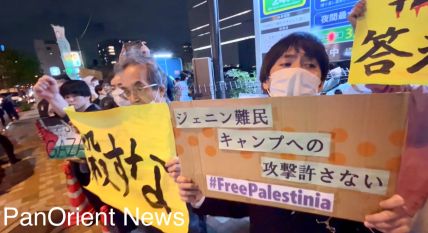|
|
Op-Ed
P. Ennis: Okinawa Problem Could Boil Over
Saturday, July 31, 2010
 Peter Ennis
Peter Ennis
It's now about as "unofficially official" as it can get that the August and November deadlines concerning a Futenma replacement facility on Okinawa will not be met.
Indeed, the political underpinnings of the 2006 bilateral "Roadmap" for realignment of US forces in Japan, of which the relocation of some 8,500 US Marines from Okinawa to Guam and the construction of a Futenma replacement facility are cornerstones, are coming undone in both countries.
The confluence of three events on July 27 made this abundantly clear - as if additional clarity were needed.
On Tuesday, Assistant Secretary of State Kurt Campbell testified on US-Japan security ties before the House Armed Services Committee, and hinted at a schedule slip by failing to mention in his prepared remarks the August deadline for reaching agreement on the exact location, design, and construction method for the Futenma replacement facility. An August agreement would supposedly then set the stage for a final political decision in the Fall.
Also, the US government's Joint Guam Program Office (JGPO) released its much-anticipated Final Environmental Impact Statement concerning the on-going military buildup on Guam, and officials made clear that vital infrastructure and other critical preparations will not be anywhere near complete by the 2014 deadline for moving the 8,500 US Marines and their 9,000 dependents to Guam. Publicly, the JGPO says 2014 is still the goal, but with huge cost overruns already apparent, and a skeptical Congress slowing funding, the Marine redeployment faces significant delays.
Meanwhile in Tokyo, Prime Minister Naoto Kan gathered for the first time since taking office the four members of his Cabinet deeply enmeshed in the Futenma issue. Present were Chief Cabinet Secretary Yoshito Sengoku, who will function as the Cabinet's Futenma coordinator; Foreign Minister Katsuya Okada, who is the principal liaison to the United States; Defense Minister Toshimi Kitazawa; and State Minister for Okinawa Seiji Maehara. The participants let it be known not-so-privately that they will defer decisions until after the Okinawa gubernatorial election, scheduled for late November. This continued a pattern of leaks with the same message.
The Okinawa election is likely to institutionalize widespread opposition to construction of the Futenma replacement facility. Prime Minister Kan has already said he will not forcibly begin construction. To do so could easily spark broader opposition to US bases in Japan, which neither Washington nor Tokyo wants to see happen. So the stage is increasingly set for Tokyo, while ceaselessly voicing support for the replacement facility, to shrug its post-election shoulders and say it needs more (undefined) time to bring Okinawan opinion along.
September Test
The big question now is how the Obama administration will respond to a situation over which it is rapidly losing even the pretense of control.
An early test could come in September. Japanese officials make no secret of the fact that Prime Minister Kan would like to visit the US for a meeting with President Obama. The sense inside the administration is that Obama, assuming Kan is reelected DPJ president and remains prime minister, would like to "hit the reset button" with the DPJ, and would welcome a meeting with Kan, probably around the time of the UN General Assembly in late September.
An important sign will be whether the administration puts aside lingering bad feelings about the Futenma issue and genuinely celebrates the US-Japan alliance in this, the 50th anniversary of the signing of the bilateral security treaty.
The administration has apparently given the go-ahead for US Ambassador John Roos to participate in the peace memorial ceremony in Hiroshima on August 6th. He would be the first US official to do so.
Obama is also scheduled to visit Japan in mid-November for the APEC summit.
Internal Disconnect
One way or another, the United States eventually will have to show flexibility on the Futenma issue. What's not clear is whether the Obama administration will accept this reality smoothly, or if another, perhaps more serious episode of bilateral tension will be needed to force cabinet officials to focus on the issue.
A major problem inside the administration is a "disconnect" between the assistant secretary level of senior officials - Kurt Campbell at State, and Chip Gregson at the Pentagon - and the Cabinet secretaries they report to. Sources intimately familiar with the thinking of Campbell and Gregson report that the two know that the current plan for Marine basing on Okinawa will not work, but they have been unable to get their respective bosses - Hillary Clinton at State and Robert Gates at Defense - to face that facts.
Campbell and Gregson have scrupulously stuck to the "tough love" stance in public, and in talks with Japanese officials.
Campbell, for example, has suggested to Japanese officials that Tokyo could adopt a "special measures" law to override Okinawan opposition to construction of a new facility on Okinawa to replace Futenma. And Gregson, in his House testimony yesterday, said he fully expects details of the Futenma replacement facility to be settled by the end of August, and full political agreement to be reached by the Fall.
But they both can see the political writing on the wall. While they may continue to press Tokyo to abide by the existing accord, both accept the domestic political constraints at work in Japan.
By contrast, Gates and Clinton have shown little interest in Japan's domestic problems, considering them rather minor in comparison to the difficulties they face in dealing with Iraq, Afghanistan, China, and North Korea. Gates and Clinton believe they have delegated the issue to Campbell and Gregson, and want it resolved without requiring cabinet attention.
As a result, Gregson and Campbell have not really leveled with Gates and Clinton, failing to inform them in no uncertain terms that the Futenma replacement plan will not work. They know Gates and Clinton do not want to hear that message, and they have chosen for the time being to try to manage an unmanageable situation.
Message to Beijing
Another factor influencing the continuing hard line from Gates and Clinton on Okinawa issues is a desire to send a strong message to both China and North Korea.
Beijing is testing Washington (and Tokyo) in the South China Sea and other parts of the region, while the regime in Pyongyang, as usual, turns to aggressive means to fight for survival on its own brutal terms. The Gates-Clinton visit recently to the Korean DMZ, and the joint military exercises conducted with South Korea, were designed to make clear to one and all that the United States intends to remain as a source of balance and stability in East Asia. The concern of both Gates and Clinton is that any sign of discord between the United States and Japan over Okinawa could weaken that message.
The irony is that Japan has been fully cooperating with the United States in those efforts. Senior officers from Japan's Self Defense Forces were on hand to observe the US-ROK exercises. The nuclear-powered aircraft carrier USS George Washington, the key to the US force projection capability in East Asia, is operating from newly-modernized facilities at the Yokosuka naval base. The 5th Air Wing attached to the George Washington is operating from a just-opened US$2 billion facility at the US Marine Air Station Iwakuni, financed in large part by Japan.
The unnecessary flap over Futenma has overshadowed this very significant boosting in US-Japan military cooperation, and a flare-up will only hinder future collaboration.
Flexibility Not Easy
Unfortunately, a shift in US policy on Okinawa can only happen through intervention at the Cabinet level. There are simply too many powerful moving parts for a policy shift to be engineered by sub-cabinet officials.
As things stand now, the national security interagency process is heavily weighed down by Afghanistan and Iraq, not to mention Iran, China, North Korea, and a host of transnational issues. Forcing Okinawa and proper deployment of the III Marine Expeditionary Force back on the policy agenda would require both Gates and Clinton doing some very "heavy lifting" politically.
Rivalries between the US Marines and the Air Force would have to be tamed. It will be very difficult for the Marines to streamline their presence on Okinawa without significant Air Force cooperation.
Meanwhile, a Congress increasingly anxious to trim Pentagon budgets would be an unpredictable factor in any effort to reopen the Marine-Okinawa issue.
Congress has already strongly signaled intent to slow down funding for the Guam buildup, not so much because of political jockeying in Japan but because of anger over faulty Defense Department estimates of infrastructure needs on Guam. Texas Senator Kay Bailey Hutchinson, a member of the Senate Appropriations Committee with considerable say on military construction issues, made some waves in Washington earlier this month when she suggested that money earmarked for the buildup on Guam would be better spent in the continental United States.
To make matters worse, the administration doesn't relish the prospect of reopening the Okinawa issue after having spent the better part of a year falsely castigating the DPJ as somehow "pro-China" and "lacking a serious commitment" to security.
At this point, the best option might be for the two countries to simply postpone consideration of Okinawa issues for at least a year, providing time for a serious, in-depth dialogue on roles, missions, and basing arrangements to develop.
In that context, the prospect of significant construction delays on Guam could provide both countries with a face-saving opportunity to begin that process.
Peter Ennis is a long-time chronicler and analyst of Japan and US-Japan relations.
PanOrient News
© PanOrient News All Rights Reserved.
|
|

